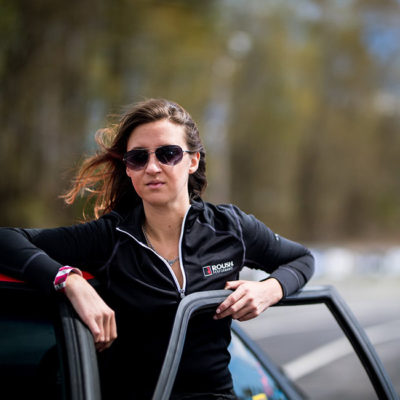Our friends at CCC Motorsports recently added a list of COMP Cams products to a twin-turbocharged Boss 302, and our own Vinny Costa was there to acquire all of the information on this high-powered project.
Greg Rentis of CCC Motorsports walked us through the decision behind the products chosen, a baseline dyno, the installation of those products, and finished with a second dyno session of the Coyote-powered Boss. He explained that the team at CCC has an ultimate goal of 2,000 horsepower for this Mustang. In an effort to bump power closer to that end goal, they worked with COMP, who designed custom camshafts for this application. They also chose to install GT350 cylinder heads, and a few other necessary parts.
Before the installation began, Rentis put the Boss on the dyno for a baseline session. It made a stout 795.8 horsepower and 620.5 lb-ft of torque at 7,000 rpm at about 11-12 psi of boost, which Rentis considered low boost for this application. He explains that this combination previously made 1,000 horsepower at 17 psi, which is the limit of the stock block. With the new setup, CCC was hoping to push to 8,000 rpm and beyond.
After removing the Boss from the rollers, the CCC team spent some time getting the modifications installed. The camshaft swap was accompanied by the replacement of the stock cylinder heads with those of the GT350 variety. The block itself is a Gen 1 Coyote with Darton sleeves installed. Rentis explained that the stock plasma-transfer wire arc liners limit the amount of power they would be able to make, but the sleeves will reinforce the cylinder walls to allow for higher power ratings.
The camshafts were set up by COMP to allow for high-RPM power. The specifications of the custom camshafts are .515/.514-inch lift, 231/229 duration at .050, and 116.0 LSA (lobe separation angle). They were custom ground to be paired with the GT350 heads after a hefty research process. While COMP makes a set of camshafts designed to work with the factory valvetrain, this is what Costa refers to as a “max effort build,” so it was important to equip the Coyote with camshafts that could handle the lift and duration that a factory valve spring simply couldn’t.
CCC also deleted the variable valve timing, and the COMP Ford Coyote 5.0L Valve Spring Kit (.600-inch max lift) was utilized for this build. This kit includes 32 springs, retainers, seats, and seals, and creates higher load, higher RPM, and more lift capacity than the factory version.
Rentis explained the reason for this part of the project in the video above, but basically, when you get to a certain power level, the variable valve timing isn’t efficient. Spring rates need to be increased, and the variable valve timing doesn’t play nice with those increased spring rates, so it must be deleted. According to COMP, the utilized Adjustable Phaser Lock Kit allows for easy adjustability and enables locking over the OEM phaser range (50 degrees). This kit also allows use of larger, more aggressive aftermarket camshafts, like the ones used in this application.
It probably goes without saying that all of these things equate to the valves staying open longer, allowing more air to flow, and resulting in more power produced.
Rentis also spoke with Costa and explained how the camshafts interface with the twin-turbocharged setup.
“What COMP generally does is want to increase the duration on the exhaust as much as possible, which helps the turbo spool,” he explained. “With an increase on the intake side to actually get the air in and out like that, it helps flow more air and potentially more power.”
Prior to the installation, the team had already done a valvespring and retainer upgrade, which is necessary for this type of power and duration.
After installing the new “hardware,” buttoning everything up, and installing the engine in the Boss, it was time to hit the rollers for another dyno session to gauge just how much these modifications are worth by way of power. Rentis explained that the initial pull was done at 12 psi to show an “apples to apples” comparison to the “before” run.
The new combination put down a tire-shredding 918.9 horsepower and 689.4 lb-ft of torque at the rear wheels, resulting in a total increase of 123.1 wheel horsepower and 68.9 lb-ft of torque. The Boss also gained about 500 to 600 rpm – where before the Boss was done around 7,000 rpm, it was pulling to about 7,600 to 7,700 rpm on the finishing pulls.
Just for fun, Rentis decided to bump the boost up to 22 psi and give it another go. The Boss responded with an impressive 1,371.5 horsepower and 986.1 lb-ft of torque, but that’s not even the maximum. He told us that the max the Boss will handle will be around 30 psi. We’d love to see that dyno graph, and we look forward to seeing this big bad Boss on-track!



















